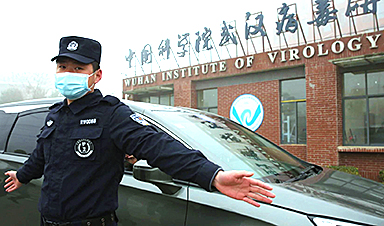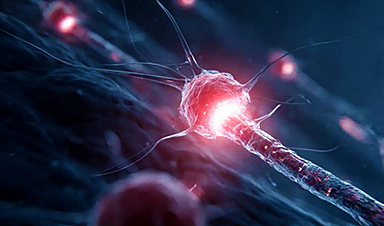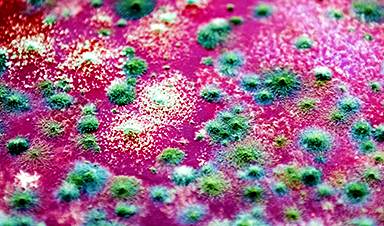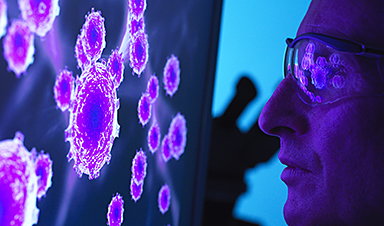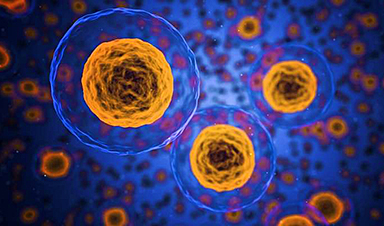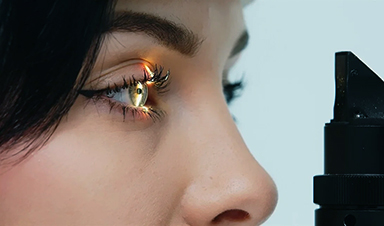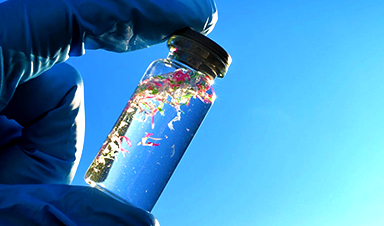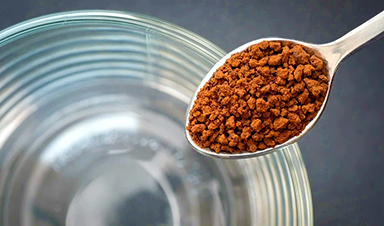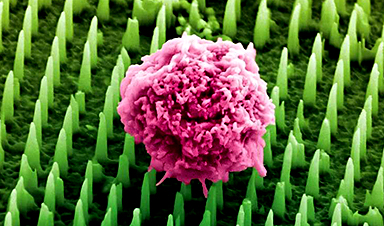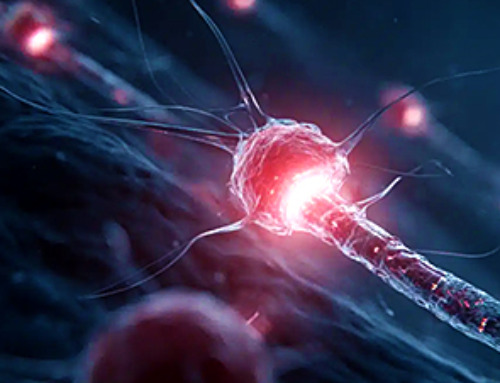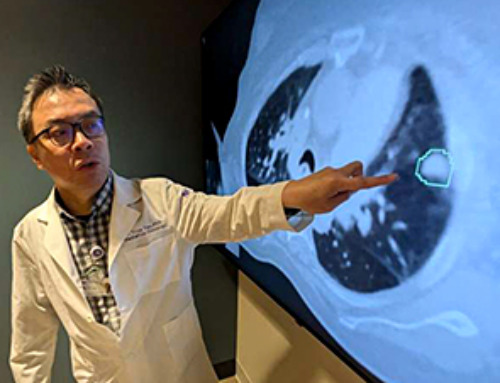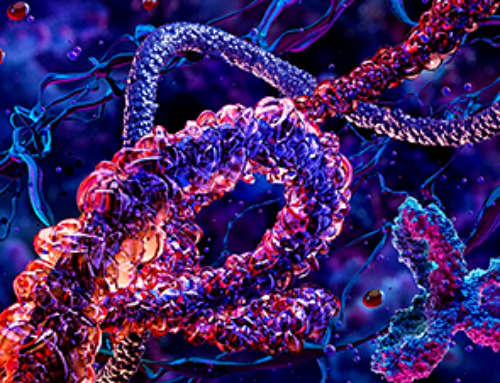For many scientists, challenging the idea that SARS-CoV-2 has natural origins is seen as career suicide. But a vocal few say it shouldn’t be disregarded or lumped in with conspiracy theories.
Nikolai Petrovsky was scrolling through social media after a day on the ski slopes when reports describing a mysterious cluster of pneumonia cases in Wuhan, China, caught his eye. It was early January 2020, and Petrovsky, an immunologist, was at his vacation getaway in Keystone, Colorado, which is where he goes most years with his family to flee the searingly hot summers at home in South Australia. He was soon struck by an odd discrepancy in how the pneumonia cases were portrayed. Chinese authorities and the World Health Organization were saying there was nothing to worry about, but locals in the area, he says, were posting about “bodies being stretchered out of houses in Wuhan and police bolting apartment doors shut.”
Petrovksy is a professor at Flinders University, near Adelaide, and he is also founder and chairman of a company called Vaxine that develops immunizations for infectious diseases, among other projects. Since 2005, he’s received tens of millions of dollars in funding from the US National Institutes of Health to support the development of vaccines and compounds called adjuvants that boost their effects. After Chinese scientists posted a draft genome of the novel coronavirus SARS-CoV-2, the disease culprit in Wuhan, Petrovksy—who by this time had put skiing on the back burner to work from his Colorado home office—directed his colleagues down under to run computer modeling studies of the viral sequence, a first step toward designing a vaccine.
This generated a startling result: the spike proteins studding SARS-CoV-2 bound more tightly to their human cell receptor, a protein called ACE2, than target receptors on any other species evaluated. In other words, SARS-CoV-2 was surprisingly well adapted to its human prey, which is unusual for a newly emerging pathogen. “Holy shit, that’s really weird,’” Petrovsky recalls thinking.
As Petrovsky considered whether SARS-CoV-2 might have emerged in lab cultures with human cells, or cells engineered to express the human ACE2 protein, a letter penned by 27 scientists appeared suddenly on February 19 in the prestigious medical journal The Lancet. The authors insisted that SARS-CoV-2 had a natural origin, and they condemned any alternate hypotheses as conspiracy theories that create only “fear, rumors, and prejudice.”
Petrovksy says he found the letter infuriating. Conspiracy theorists is “the last thing we were,” he says, “and it looked to be pointing at people like us.”
Last month, a team of international scientists completed a month-long visit to Wuhan to investigate SARS-CoV-2’s origins. Convened by the WHO, and closely monitored by Chinese authorities, the team concluded initially that a lab leak was so unlikely that further investigations of it were unnecessary. The WHO’s director general later walked that statement back, claiming that “all hypotheses remain open and require further analysis and studies.” A group of 26 scientists, social scientists, and science communicators—Petrovksy among them—have now signed their own letter arguing that WHO investigators lacked “the mandate, the independence, or the necessary accesses” to determine whether or not SARS-CoV-2 could have been the result of a laboratory incident.
The WHO investigation follows a year during which debates over SARS-CoV-2’s origins turned increasingly acrimonious. Chinese officials were, and still are, unwilling to provide information that might settle lingering questions…
Image Credit: AP
Post by Amanda Scott, NA CEO. Follow her on twitter @tantriclens
Thanks to Heinz V. Hoenen. Follow him on twitter: @HeinzVHoenen
News
Drug-Coated Neural Implants Reduce Immune Rejection
Summary: A new study shows that coating neural prosthetic implants with the anti-inflammatory drug dexamethasone helps reduce the body’s immune response and scar tissue formation. This strategy enhances the long-term performance and stability of electrodes [...]
Scientists discover cancer-fighting bacteria that ‘soak up’ forever chemicals in the body
A family of healthy bacteria may help 'soak up' toxic forever chemicals in the body, warding off their cancerous effects. Forever chemicals, also known as PFAS (per- and polyfluoroalkyl substances), are toxic chemicals that [...]
Johns Hopkins Researchers Uncover a New Way To Kill Cancer Cells
A new study reveals that blocking ribosomal RNA production rewires cancer cell behavior and could help treat genetically unstable tumors. Researchers at the Johns Hopkins Kimmel Cancer Center and the Department of Radiation Oncology and Molecular [...]
AI matches doctors in mapping lung tumors for radiation therapy
In radiation therapy, precision can save lives. Oncologists must carefully map the size and location of a tumor before delivering high-dose radiation to destroy cancer cells while sparing healthy tissue. But this process, called [...]
Scientists Finally “See” Key Protein That Controls Inflammation
Researchers used advanced microscopy to uncover important protein structures. For the first time, two important protein structures in the human body are being visualized, thanks in part to cutting-edge technology at the University of [...]
AI tool detects 9 types of dementia from a single brain scan
Mayo Clinic researchers have developed a new artificial intelligence (AI) tool that helps clinicians identify brain activity patterns linked to nine types of dementia, including Alzheimer's disease, using a single, widely available scan—a transformative [...]
Is plastic packaging putting more than just food on your plate?
New research reveals that common food packaging and utensils can shed microscopic plastics into our food, prompting urgent calls for stricter testing and updated regulations to protect public health. Beyond microplastics: The analysis intentionally [...]
Aging Spreads Through the Bloodstream
Summary: New research reveals that aging isn’t just a local cellular process—it can spread throughout the body via the bloodstream. A redox-sensitive protein called ReHMGB1, secreted by senescent cells, was found to trigger aging features [...]
AI and nanomedicine find rare biomarkers for prostrate cancer and atherosclerosis
Imagine a stadium packed with 75,000 fans, all wearing green and white jerseys—except one person in a solid green shirt. Finding that person would be tough. That's how hard it is for scientists to [...]
Are Pesticides Breeding the Next Pandemic? Experts Warn of Fungal Superbugs
Fungicides used in agriculture have been linked to an increase in resistance to antifungal drugs in both humans and animals. Fungal infections are on the rise, and two UC Davis infectious disease experts, Dr. George Thompson [...]
Scientists Crack the 500-Million-Year-Old Code That Controls Your Immune System
A collaborative team from Penn Medicine and Penn Engineering has uncovered the mathematical principles behind a 500-million-year-old protein network that determines whether foreign materials are recognized as friend or foe. How does your body [...]
Team discovers how tiny parts of cells stay organized, new insights for blocking cancer growth
A team of international researchers led by scientists at City of Hope provides the most thorough account yet of an elusive target for cancer treatment. Published in Science Advances, the study suggests a complex signaling [...]
Nanomaterials in Ophthalmology: A Review
Eye diseases are becoming more common. In 2020, over 250 million people had mild vision problems, and 295 million experienced moderate to severe ocular conditions. In response, researchers are turning to nanotechnology and nanomaterials—tools that are transforming [...]
Natural Plant Extract Removes up to 90% of Microplastics From Water
Researchers found that natural polymers derived from okra and fenugreek are highly effective at removing microplastics from water. The same sticky substances that make okra slimy and give fenugreek its gel-like texture could help [...]
Instant coffee may damage your eyes, genetic study finds
A new genetic study shows that just one extra cup of instant coffee a day could significantly increase your risk of developing dry AMD, shedding fresh light on how our daily beverage choices may [...]
Nanoneedle patch offers painless alternative to traditional cancer biopsies
A patch containing tens of millions of microscopic nanoneedles could soon replace traditional biopsies, scientists have found. The patch offers a painless and less invasive alternative for millions of patients worldwide who undergo biopsies [...]
